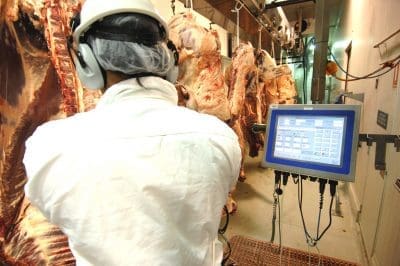THE encouraging surge in slaughter cattle prices since processors retuned to work this year has continued this week, with many direct consignment grids lifting another 10-30c/kg since Friday.
However producers have largely been slow to respond, with plenty of green feed in the paddock meaning there is little compulsion to sell, and a sense that the cycle has further to run yet, as cattle gain weight.
 Added to that is the fact that many processors started the year with an empty book, not prepared to secure cattle late last year for kills in January. That’s only heightened the appetite to get some cattle around them, as more northern plants kick off their 2024 seasons.
Added to that is the fact that many processors started the year with an empty book, not prepared to secure cattle late last year for kills in January. That’s only heightened the appetite to get some cattle around them, as more northern plants kick off their 2024 seasons.
Some Queensland and northern NSW grids are now 40-65c/kg above where they finished in 2023, and have now reached their highest level seen since July or August last year.
Despite that, processor livestock buyers have hardly been overwhelmed with inquiries, Beef Central was told this morning. Central Queensland has been particularly slow.
As often happens in a rising market when supply is tight, saleyards rates this week are perhaps a little above over the hooks rates, but that’s likely to square-up after a few weeks, history suggests.
There has been a big jump in yardings through the saleyards system this week, with 5500 on offer at Roma this morning and 1700 at Gunnedah, where cows jumped up to 20c/kg liveweight, averaging 235-240c/kg. Warwick sale this morning yarded around 1300 head, with slaughter-weight cows selling to around 240-245c and bullocks 310c.
Competitive direct consignment quotes in southern Queensland this morning had heavy cows at 450-480c/kg dressed weight (depending on location) and four-tooth heavy grass ox anywhere from 475-550c/kg. Some grids have an extra 10c/kg on offer for HGP-free steer. Some of this week’s adjustments, at least, were about keeping pace with competitors’ offers.
Certified grassfed MSA steers 0-2 tooth are making 500c/kg and better in southern Queensland today.
Weather is playing a big part in slaughter cattle availability in the opening stages of 2024, and the slow response to higher price offers, combined with the fact that some producers are still on their annual break.
A few reports have come forward this week of consignments being cancelled due to transport difficulties associated with weather, especially from areas like western Queensland. Other areas would only need another 25-50mm on already wet paddocks to make delivery difficult, one processor said.
“Many producers across eastern Australia now have green grass, and while cattle are putting on weight, they’re not in any hurry to sell,” was one livestock buyer’s assessment this morning.
The risk with that is that if everybody takes the same approach, it could see a rush of well-finished cattle placed on the market heading into March-April, which could oversupply the market heading into Easter and push prices lower.
While some modest gains have been made in physical processing capacity compared with this time last year as the labour situation improves, it would still not take too much to reach the processing sector’s labour threshold again, one processor suggested.
The first weekly national slaughter summary for the year issued by NLRS last week showed a week-one figure (week ending 5 January) of 53,648 head, up about 6pc on the same week last year.
With many Queensland plants still on holidays, the results showed the nation’s largest kill in NSW (16,215 head), followed by Queensland (15,366 head) and Victoria 12,901 head.
Kills are likely to remain reasonably low up to the Australia Day long weekend, but should get back to full operations during the first week in February, weather permitting.
